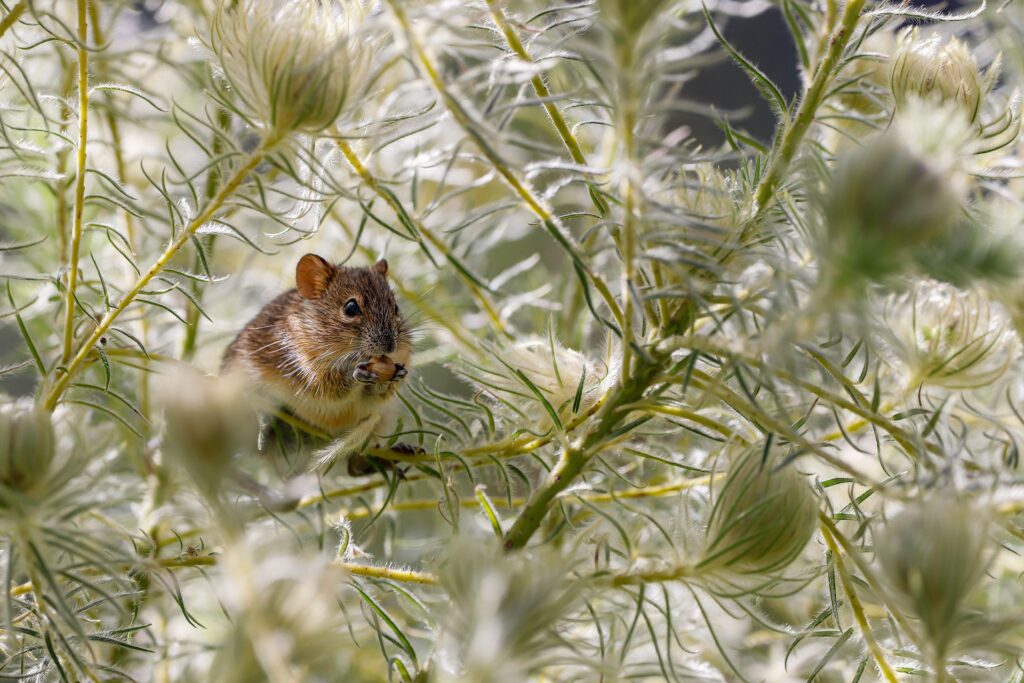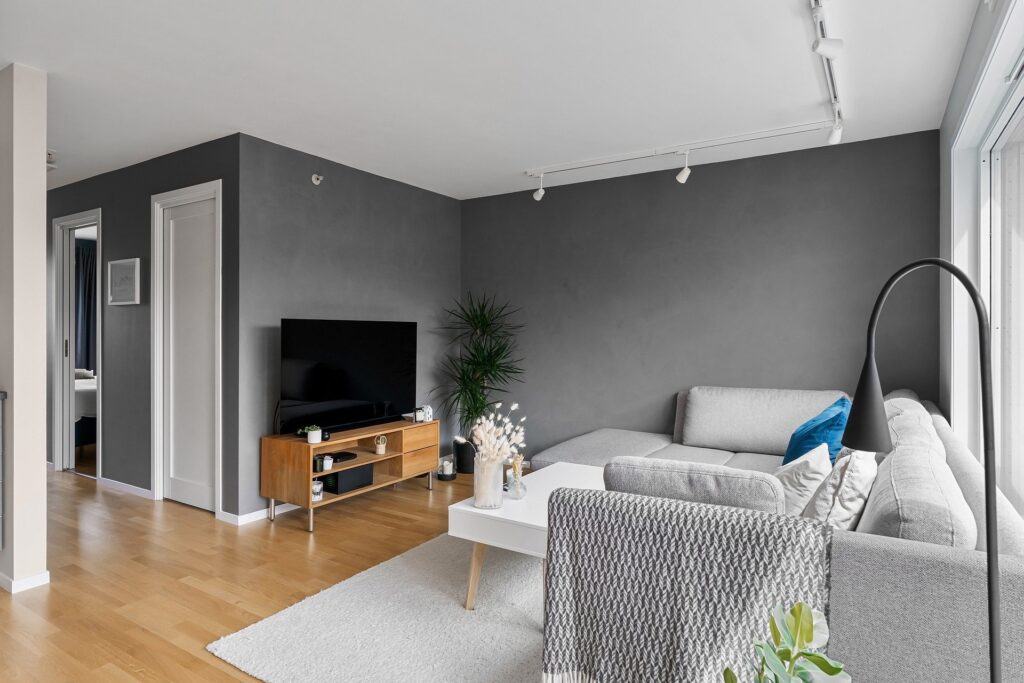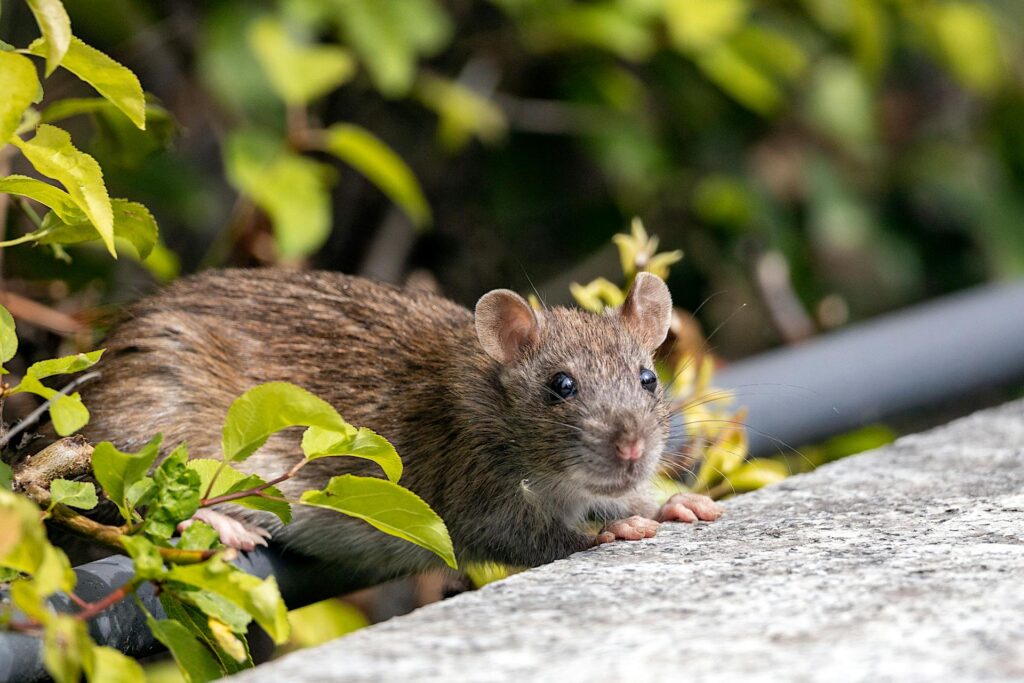Did you know that there are tiny creatures lurking in your home that can cause significant damage to fabrics and other materials? These are carpet beetles, small oval-shaped insects with a varied color pattern. There are several species of carpet beetles, but the most common ones are the black carpet beetle, varied carpet beetle, and furniture carpet beetle.
Carpet beetle adults may not cause much harm, but it’s their larvae that you need to watch out for. The larvae feed on larval food like woolens and can cause extensive damage if left unchecked. Some of the most common carpet beetle species include Anthrenus flavipes and Attagenus unicolor.
Understanding the life cycle of these pests is crucial in controlling their population. So let’s cut to the chase and explore these pesky household pests!
Identification and Signs of Infestation: How to Spot Carpet Beetles in Your Home
Carpet beetles are common household pests that can cause significant damage to fabrics, carpets, and other materials. These insects feed on a wide range of natural fibers, including wool, silk, cotton, and leather. They are also attracted to dead insects and flies.
Identifying Carpet Beetles
There are two main types of carpet beetles: varied carpet beetles and black carpet beetles. Varied carpet beetles have distinctive white scales on their backs that can help identify them. They are small oval-shaped insects that measure between 1/8 to 3/16 inches long. Black carpet beetles have a shiny black appearance and long hairs on their bodies. They grow up to 1/8 inch long.
Carpet beetle larvae are elongated and covered in short hairs. They range in color from light brown to almost black. Adult carpet beetles have wings but rarely fly.
Signs of Infestation
Carpet beetle infestations can be challenging to detect because these insects tend to hide in dark places like closets or under furniture for extended periods. However, there are several signs you can look out for:
- Holes: One of the most apparent signs of a carpet beetle infestation is holes in your fabric or carpets.
- Skins: Another sign is shed skins from the larvae as they molt.
- Adults: You may see adult carpet beetles crawling around your home.
- Larvae: You might find larvae crawling around near the sources of infestation.
- Dead Insects: Carpet beetles feed on dead insects, so if you notice an increase in dead bugs around your home, it could be a sign that you have an infestation.
- Spider Webs: Carpet beetles are attracted to spider webs, so if you see an increase in cobwebs around your home, it could be a sign of infestation.
- Wooden Beams: Carpet beetles can also infest wooden beams and other structural materials in your home, so keep an eye out for signs of damage.
- Bird Nests: If you have birds nesting near your home, carpet beetles may be attracted to the feathers and debris left behind.
How to Get Rid of Carpet Beetles
If you suspect that you have a carpet beetle infestation, there are several steps you can take to get rid of them:
- Identify the Source: The first step is to identify the source of the infestation. Check all areas where natural fibers or dead insects are present.
- Vacuum Thoroughly: Vacuuming is an effective way to remove both adult beetles and larvae. Make sure to vacuum all carpets, furniture, and baseboards.
- Wash Fabrics: Wash any fabrics that may be infested with hot water and detergent. Dry them on high heat.
- Freeze Items
Management and Control Guidelines: How to Get Rid of Carpet Beetles
If you have a carpet beetle infestation in your home, it’s important to take action to get rid of these pests before they cause too much damage.
Vacuum Regularly
One of the most effective ways to remove adult carpet beetles and their larvae from your home is by vacuuming regularly. This will help to physically remove any insects or eggs that may be present in your carpets, upholstery, or other fabrics. Be sure to vacuum thoroughly, paying special attention to areas where the beetles are likely to hide such as under furniture or along baseboards.
In addition to vacuuming regularly, there are some other steps you can take to prevent new infestations from occurring:
- Seal cracks and crevices in walls: Carpet beetles can enter your home through tiny cracks and crevices in walls. By sealing these openings with caulk or another sealant, you can prevent new infestations from occurring.
- Store clothing properly: Carpet beetle larvae often feed on clothing that has been stored for long periods of time. To prevent this from happening, store your clothes in sealed plastic bags or containers.
- Clean up spills promptly: Food spills can attract carpet beetles into your home. Be sure to clean up any spills promptly and keep food storage areas clean.
Use Insecticides
If you have a severe carpet beetle infestation in your home, you may need to use insecticides to get rid of the pests. There are several different types of insecticides that can be effective against carpet beetles including pyrethrins and permethrins.
When using insecticides:
- Read the label carefully: Be sure to read and follow all instructions on the label of the insecticide you are using.
- Use in a well-ventilated area: Insecticides can be harmful if inhaled, so be sure to use them in a well-ventilated area.
- Wear protective clothing: When applying insecticides, wear gloves, long sleeves, and pants to protect your skin from exposure.
- Treat all affected areas: Be sure to treat all areas where carpet beetles may be present including carpets, upholstery, and other fabrics.
Prevention Tips: Keeping Carpet Beetles Out of Your Home
These pests feed on natural fibers like wool, silk, and cotton, which means that they can quickly destroy your belongings if left unchecked. Fortunately, there are several preventative measures you can take to keep carpet beetles out of your home.
Regular Cleaning to Prevent Accumulation of Food Sources
One of the most effective ways to prevent carpet beetle infestations is by regularly cleaning carpets, rugs, and upholstery. This will help eliminate any food sources for larvae that may accumulate over time. Vacuuming at least once per week is recommended as it can remove pet hair, dust mites, and other debris that could attract carpet beetles.
In addition to vacuuming regularly, consider steam cleaning your carpets and upholstery every six months or so. Steam cleaning uses high-temperature water vapor to kill bacteria and other microorganisms while also removing dirt and grime from surfaces. This method is particularly effective at eliminating any eggs or larvae that may be hiding in your carpets or furniture.
Storing Clothing in Sealed Containers
Adult carpet beetles lay their eggs on clothing items made from natural fibers like wool or silk. Once the eggs hatch into larvae, they start feeding on the fabric immediately. To prevent this from happening, it’s important to store clothing items in sealed containers when not in use.
There are several types of storage containers available for this purpose, including plastic bins with tight-fitting lids or vacuum-sealed bags designed specifically for storing clothing items. Make sure all clothing is clean before storing them away as dirty clothes may attract carpet beetles.
Placing Pheromone Traps Around Your Home
Pheromone traps are an effective way to capture adult carpet beetles before they have a chance to lay eggs on your belongings. These traps use a synthetic version of the pheromone that female carpet beetles release to attract males for mating. When male beetles are attracted to the trap, they get stuck in the sticky surface, preventing them from reproducing.
Pheromone traps can be placed around your home in areas where carpet beetles are likely to congregate, such as closets, drawers, and under furniture. Make sure to replace the traps every three months or so as they will lose effectiveness over time.
Chemical Treatments: Professional Pest Control Solutions for Carpet Beetle Infestations
While prevention is the best approach to avoid carpet beetle infestations, chemical treatments can be effective in eliminating severe cases.
Insecticides for Carpet Beetles
Insecticides are a common treatment option for carpet beetle infestations. They contain active ingredients that kill the pests on contact or through ingestion. Some commonly used insecticides include:
- Chlorpyrifos: A broad-spectrum insecticide that can effectively control carpet beetles in all life stages.
- Bifenthrin: A synthetic pyrethroid insecticide that is highly toxic to insects but has low toxicity to mammals.
- Boric acid: A natural mineral that acts as a stomach poison when ingested by the pests.
Insecticides come in different forms, including sprays, dusts, and resin strips. Sprays are applied directly on carpets, furniture, and other infested areas. Dusts are applied using dusters or hand-held applicators and provide long-lasting residual control. Resin strips release vapors that kill adult carpet beetles over time.
It’s important to note that some insecticides may not be suitable for use on certain materials or surfaces. Always read the label before use and follow the manufacturer’s instructions carefully.
Fumigation Treatment
Fumigation treatment involves sealing an infested area and releasing a gaseous pesticide into it to eliminate all life stages of carpet beetles in one treatment. Sulfuryl fluoride is a commonly used fumigant for carpet beetle control because it penetrates deep into fabrics and other materials where the pests hide.
Fumigation treatment requires specialized equipment and training, and it can only be performed by licensed pest control professionals. It’s important to vacate the treated area during fumigation and follow the recommended safety measures before re-entering.
Hiring a Professional Pest Control Company
While some chemical treatments can be applied by homeowners, severe infestations may require professional intervention. A licensed pest control company has access to more effective products and tools that are not available to homeowners. They also have the knowledge and experience to identify the source of the infestation and apply treatments safely.
When hiring a pest control service, look for one that is licensed, insured, and has a good reputation in your community. Ask for references and compare quotes from different providers before making a decision.
Cleaning and Sanitizing: How to Prevent Carpet Beetles from Taking over your Home.
Carpet beetles are tiny pests that can cause serious damage to your home’s fabrics, carpets, and upholstered furniture. They feed on natural fibers like wool, silk, fur, and feathers. If left untreated, a carpet beetle infestation can quickly spread throughout your home. Here are some tips on how to prevent carpet beetles from taking over your home.
Regularly wash bedding, curtains, and other fabrics in hot water
One of the easiest ways to prevent a carpet beetle infestation is by regularly washing your bedding, curtains, and other fabrics in hot water. This will kill any eggs or larvae present in the fabric. Be sure to follow the care label instructions for each item you wash.
Vacuum carpets, rugs, and upholstery at least once a week
Vacuuming is an effective way to remove any adult beetles or larvae present in your carpets, rugs, and upholstery. Make sure to vacuum all areas thoroughly including under furniture and along baseboards where carpet edges meet walls. Use the crevice tool attachment to get into tight spaces like corners and edges.
Keep your home free from clutter
Carpet beetles love hiding places where they can lay eggs undisturbed. Keeping your home free from clutter will eliminate these hiding places and prevent an infestation from starting. Regularly clean out closets and storage areas where clothes moths may be lurking.
Store clothing properly
When storing clothing that is made of natural fibers like wool or silk be sure it is stored properly. Use mothballs or cedar chips in storage containers or bags as they are natural repellents for moths which also work as repellents for carpet beetles.
Clean floors regularly
Dust and food residue on floors can attract carpet beetles looking for a meal. Sweeping floors daily with a broom followed by mopping with a disinfectant cleaner can prevent carpet beetles from finding food sources in your home.
Check upholstered furniture regularly
Upholstered furniture provides an ideal hiding place for carpet beetles. Check your furniture regularly for any signs of infestation such as small holes or larvae casings. If you find any evidence of an infestation, vacuum the furniture thoroughly and consider contacting a professional exterminator.
Dry clean fabrics that cannot be washed in hot water
Some fabrics like silk and wool cannot be washed in hot water without damaging them. In this case, it is best to take these items to a professional dry cleaner to ensure they are properly cleaned and any eggs or larvae present are eliminated.
FAQs
Q: What are some common signs of a carpet beetle infestation?
A: Common signs include small holes in fabric or carpets, shed skins or larvae casings, adult beetles crawling on surfaces or flying around lights.
Q: Can I get rid of carpet beetles naturally without using chemicals?
A: Yes! You can use natural remedies such as diatomaceous earth or essential oils like lavender or peppermint to repel or kill carpet beetles.
Q: How often should I clean my carpets and fabrics to prevent carpet beetle infestations?
A: It’s recommended to vacuum carpets and fabrics at least once a week. Regular washing of linens and fabrics is also important for prevention.
Q: Are there any specific areas in my home where I’m more likely to find carpet beetles?
A: Yes, they tend to prefer dark areas such as closets or storage spaces where their food source (natural fibers) may be stored.
Q: Can professional pest control services guarantee complete elimination of carpet beetles?
A: While no service can guarantee complete elimination of pests, professional pest control services have access to stronger chemicals that may be more effective than DIY methods.
Maintaining a Pest-Controlled Home with Effective Carpet Beetle Management
In conclusion, preventing and managing carpet beetle infestations in your home is crucial for a pest-controlled environment. Identifying the signs of infestation, implementing effective management and control guidelines, practicing prevention tips, using natural ways to control carpet beetles, and considering chemical treatments are all important steps to take. Cleaning and sanitizing your home regularly can help prevent carpet beetles.
To maintain a pest-controlled home, it’s essential to stay vigilant and take action as soon as you notice any signs of carpet beetle infestation. By following the guidelines outlined in this article, you can effectively manage and prevent future infestations.









